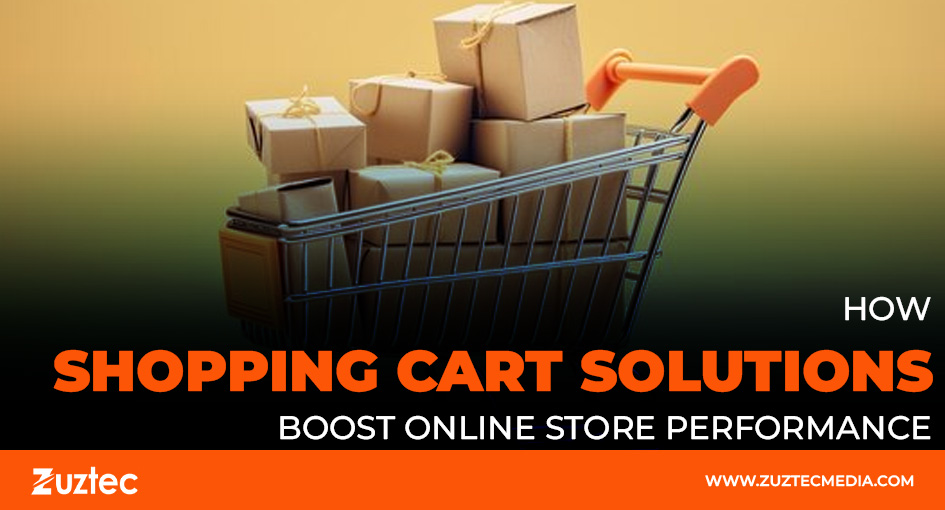
How Shopping Cart Solutions Boost Online Store Performance
As e-commerce becomes more competitive, online retailers need every advantage to attract and convert customers. While marketing and product quality are key elements, your website’s shopping experience often makes or breaks a sale. Choosing the right shopping cart solutions can significantly impact how users interact with your store and whether they complete their purchases. Modern shoppers expect a fast, secure, and user-friendly checkout process. If your cart is slow, confusing, or doesn’t support their preferred payment method, they’re likely to abandon it. Shopping cart abandonment is a major problem in e-commerce, with some estimates suggesting that more than 70% of users leave their carts before completing a purchase. Much of this can be traced back to poor cart design or functionality.
The cart solutions aim to solve this issue by providing ecommerce businesses with flexible, customizable tools that streamline the buying process. These tools handle more than just the “add to cart” and “checkout” functions—they integrate with payment gateways, apply discounts, calculate shipping costs, manage inventory, and even recover abandoned carts through automated emails.
For small businesses and large retailers alike, choosing the right shopping cart solution can lead to better conversion rates, higher order values, and improved customer satisfaction. It’s not just about technology—it’s about creating a seamless shopping journey that encourages users to complete their purchases with confidence. By investing in the right platform, e-commerce brands set themselves up for long-term success.
Shopping Cart Solutions Improve Checkout And User Experience
Your checkout process is the final hurdle in turning a visitor into a customer. A complicated or frustrating checkout experience can undo all the work that went into attracting the buyer in the first place. Shopping carts are designed to make that final step as simple and efficient as possible.
A good cart system supports multiple payment options, including credit cards, digital wallets, and buy-now-pay-later services. It should also calculate taxes and shipping fees in real time so that customers aren’t surprised at the last minute. Offering guest checkout is another crucial feature, as many users are turned off by being forced to create an account.
Additionally, mobile optimization is critical. With more users shopping via smartphones and tablets, your cart must work seamlessly on smaller screens. Features like auto-fill, mobile-friendly layouts, and large call-to-action buttons can make a big difference in mobile conversions.
Finally, some advanced solutions include features like upselling and cross-selling within the cart. By suggesting complementary products or offering discounts on bundled items, you can increase average order value without being pushy or disruptive. These subtle tactics can improve revenue while still prioritizing the customer experience.
Essential Features To Look For In A Shopping Cart Platform
Not all shopping carts are created equal. The right choice depends on your business model, product type, and technical needs. That said, there are some universal features that every e-commerce platform should include to ensure efficiency, security, and scalability.
Inventory management is one of the most important. Your cart should update stock levels in real time and alert you when items are running low. For stores with a wide range of products, this feature helps avoid overselling and improves fulfillment accuracy.
Third-party integrations also play a big role. Your cart should work smoothly with your preferred payment processors, shipping providers, email marketing tools, and CRM systems. These integrations help streamline operations and reduce manual work.
In the middle of your e-commerce journey, choosing the right shopping cart solutions can drastically change your store’s performance. Whether you’re looking for simple functionality or enterprise-level customization, the solution should grow with your business and adapt to your evolving needs.
Common Challenges And How To Avoid Them
While shopping cart technology has come a long way, some businesses still face challenges that reduce efficiency and hurt sales. One common issue is compatibility. If your cart doesn’t integrate properly with your store’s platform or third-party services, it can lead to errors, delays, and customer frustration.
Poor design is another problem. A cluttered or confusing interface makes it harder for users to complete their orders. Stick to clean layouts, simple navigation, and clear instructions to ensure a smooth experience. Testing your cart regularly on various devices and browsers helps catch design flaws before they affect customers.
Inconsistent shipping options and unclear return policies can drive users away as well. Make sure your cart clearly outlines delivery timelines, costs, and any conditions. Offering multiple shipping methods—like express, standard, or local pickup—caters to different customer needs and expectations.
However, a well-designed checkout system is more than just a final step—it’s a powerful tool that affects conversion rates, customer satisfaction, and overall sales. With the right shopping cart solutions, e-commerce businesses can create a seamless, secure, and user-friendly shopping experience that keeps buyers coming back. From simplified payments and mobile optimization to inventory management and cart recovery, these solutions offer the foundation needed for scalable online growth. By investing in a robust cart platform, you’re not just improving your website—you’re building a better business.

